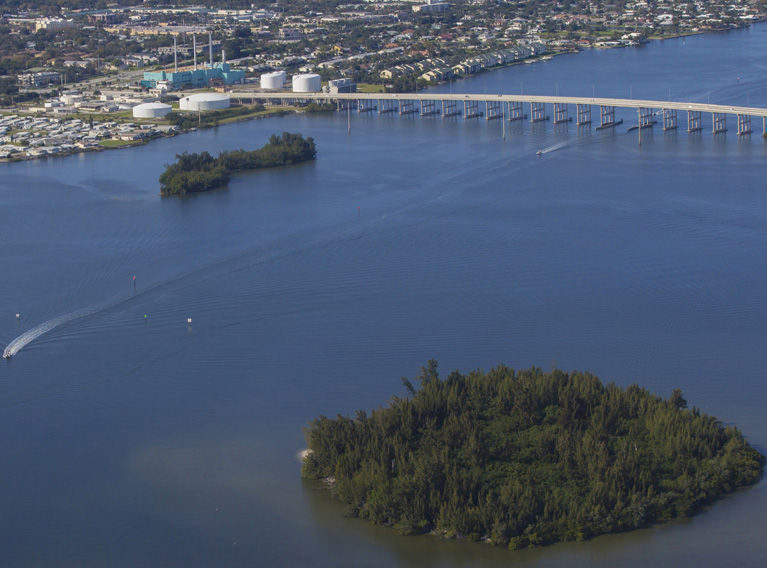
INDIAN RIVER COUNTY — The Ocean Research and Conservation Association, which first brought the crisis in the Indian River Lagoon to light with sediment testing five years ago, is about to launch a new round of research between the Barber Bridge and The Moorings aimed at identifying the sources of ecology-killing muck on the floor of the estuary.
Funded by a $46,000 grant from the Indian River Community Foundation, the project will start at the end of the month and be led by ORCA research scientist Beth Falls.
Falls will gather muck from 55 sites in Indian River County along a section of the lagoon from just north of the Barber Bridge to The Moorings, and analyze the chemistry and particle size of the goopy material in hopes of identifying primary sources of the muck, some of which is known to come from dead algae settling to the lagoon bottom. She expects to spend about a month collecting the samples, completing field work by late November.
Muck is a major problem in the lagoon because the silty layer on the bottom of the water smothers seagrass and kills other organisms by consuming oxygen and releasing nutrients that feed destructive algae blooms. When the algae dies, it drifts down and thickens the sediment layer, creating a self-perpetuating cycle of deterioration in the estuary.
“The muck is the consequence of the nutrient pollution and it’s the cause of the nutrient pollution,” Falls said in a recent interview at the ORCA office in the old Coast Guard station on the Fort Pierce Inlet, where she stirred a jar of dark-colored goop. The viscous blob with the consistency of chocolate pudding brought a frown to the scientist’s face.
Typically, muck on the bottom of the lagoon includes components such as a sandy sediment but environmental harm begins when it’s combined with chemicals from fertilizer runoff and septic tank seepage, lawn clippings, algae and other decomposing organic matter.
“The problem is when you get more of the bad stuff and less of the natural sediments, which have larger particle size,” Falls said.
The finer, silky materials in the muck bind more toxins with other particles, which eventually can choke out estuarine life forms. Finer sediment also is more easily stirred up and dispersed by wave action and storms, putting nutrients back into circulation and feeding the destructive, oxygen-eating cycle of algae growth, death and decay.
Falls, who has been with ORCA for about eight years, said she has done other sentiment studies in the lagoon but that “this is the first study where we’re really focusing on the muck and trying to figure out where it is coming from.”
At each site, Falls will use a long stick and scoop to take the samples, measuring features such as the muck depth.
She noted that in the worst cases, there can be a sticky layer of muck five feet thick on the lagoon floor.
Ultimately, ORCA scientists believe that pinpointing the sources of ecology-killing muck will help local governments and state agencies figure out how to reduce the buildup of toxic goop as one step in restoring the health of the lagoon.



